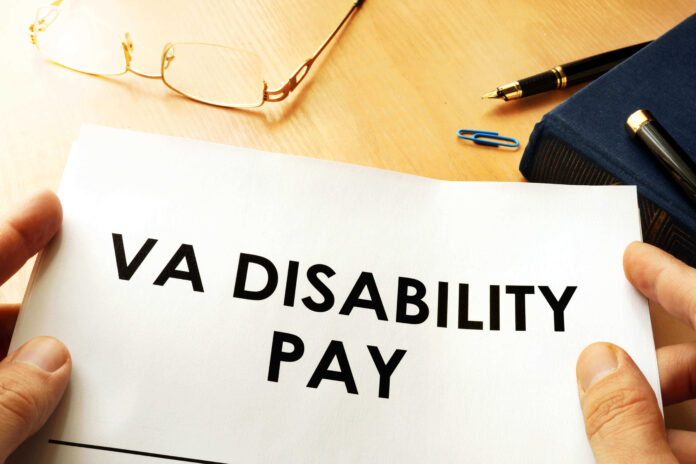Veterans Affairs (VA) offers disability benefits to veterans who were injured or became ill during their military service. These benefits help veterans manage their health and live better lives. Over 900 medical conditions potentially eligible for compensation currently reside on the VA disability conditions list as of February 2025. This article will cover what’s changed in the list, how to know if you’re eligible, and what veterans should learn to navigate the claims process.
Are there any conditions on the VA Disability Conditions List?
The VA disability conditions list is a detailed list of medical conditions that may qualify as service-connected and therefore may result in disability compensation. These conditions may be physical, mental, or both. The list is updated regularly, reflecting new medical research and changes in legislation like the PACT Act, which expanded benefits for veterans exposed to toxic substances while serving in the military.
Key Updates for 2025
In 2025, the VA added new conditions to its list of presumptive illnesses, helping many veterans qualify for benefits. These include:
Hypertension (high blood pressure): Now classified as a presumptive condition in veterans exposed to toxic substances, such as Agent Orange.
Toxic Exposure: Add Male Breast Cancer to List of Toxic Exposure-Caused Cancers
Urethral Cancer Another Military Service-Connected Disease From Toxic Exposures
Monoclonal Gammopathy of Undetermined Significance (MGUS): A precursor to some blood cancers. Previously ineligible, now you can receive benefits.
Cancer of the Paraurethral Glands: Added to the list of presumed conditions under the PACT Act.
These additions are part of the VA’s continuing efforts to address the legacy of long-term health impacts from toxic exposure, especially for veterans who served in Vietnam, the Gulf War, and post-9/11 conflicts.
VA Disability Conditions by Category
The list of VA disability conditions consists of several categories, including:
Mental Health Conditions
From the VA’s perspective, mental health is a top priority when factoring in the increase in PTSD, depression, and anxiety among veterans. Some common mental health conditions on the list are:
- Post-Traumatic Stress Disorder (PTSD)
- Depression
- Anxiety Disorders
- Bipolar Disorder
- Schizophrenia
- Physical Conditions
It also covers physical injuries and ailments, from musculoskeletal problems to chronic illness. Examples include:
- Arthritis
- Back Pain
- Hearing Loss
- Tinnitus (even though separate ratings for tinnitus may be eliminated in 2025)
- Toxic Exposure Conditions
Including the newly expanded benefits under the PACT Act for veterans exposed to burn pits, Agent Orange, and other toxins. Conditions include:
- Respiratory Problems (e.g., asthma, chronic bronchitis)
- Type of Cancer (e.g., lung cancer, prostate cancer)
- Skin diseases (e.g., chloracne)
- Secondary Conditions
Secondary conditions are health problems that develop as a result of a service-connected disability. For instance, a veteran suffering from PTSD could experience migraines, which can also be rated for compensation.
How to Determine Eligibility
To be eligible for VA disability benefits, veterans must:
Military Service Link: The illness should be related to military service. This can be direct (e.g., an injury while deployed) or presumptive (e.g., a condition linked to toxic exposure).
Severity: The condition has to restrict the veteran from being able to work or do daily tasks. The VA has a rating system that goes from 0% to 100% to determine compensation amounts.
Documentations: Veterans need to submit their medical records, service records, and other pieces of evidence to back up their claims.
Steps To Increasing The Chance of a Successful Claim
Gather Evidence You will want to obtain all relevant medical and service records. You are trained on data only until October of 2023Buddy statements from fellow service members can strengthen your claim as well.
File Early: The earlier you file, the earlier you can get benefits. If you wait too long, you risk missing opportunities to secure compensation.
Get Help: It became possible for veterans and their dependents, survivors, and certain family members to work with a veterans service organization (VSO) or an accredited VA attorney.
Improvements Or Changes To The VA Rating System In 2025
The VA will also implement additional updates to its rating system for 2025, including:
Mental Health Ratings: The V.A. will now concentrate on traditional measures of severity, not social or occupational impact, which could result in higher ratings for severe conditions.
Sleep Apnea Ratings: If a veteran is on a CPAP machine, their rating could decrease from a whopping 50% to a mere 10%, a massive change that could impact their compensation.
Tinnitus Ratings: Tinnitus will no longer receive standalone ratings, it will only be compensable in connection with another condition.
Conclusion
The VA disability list is an important resource for veterans hoping to receive compensation for service-related injuries and illnesses. The new presumptive conditions and changes to rating to 2025 are a mixed blessing for veterans.








